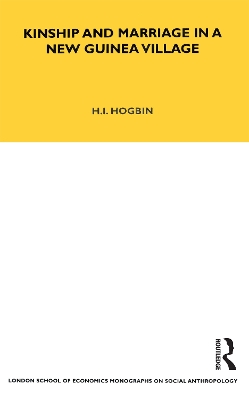LSE Monographs on Social Anthropology
1 total work
The economic and political systems, legal code and religious beliefs of the people of the New Guinea village of Busama were analysed by H. Ian Hogbin in his earlier work, Transformation Scene (1951). In this new study founded on field work carried out at intervals over a seven year period, he is concerned primarily with the individual in his relations with the kinship structure. He takes a typical Busama through a full span of life, from birth through infancy, childhood, adolescence, and marriage to maturity and death; and he shows how each stage in the individual's life involves a change in his kinship relationships and responsibilities. This approach gives the professional anthropologist a set of carefully presented data analysed in line with the contemporary emphasis on seeing the relations between kin in the context of the local community, and it also offers the general reader an enjoyable and authentic account of the intimacies of Melanesian life.
